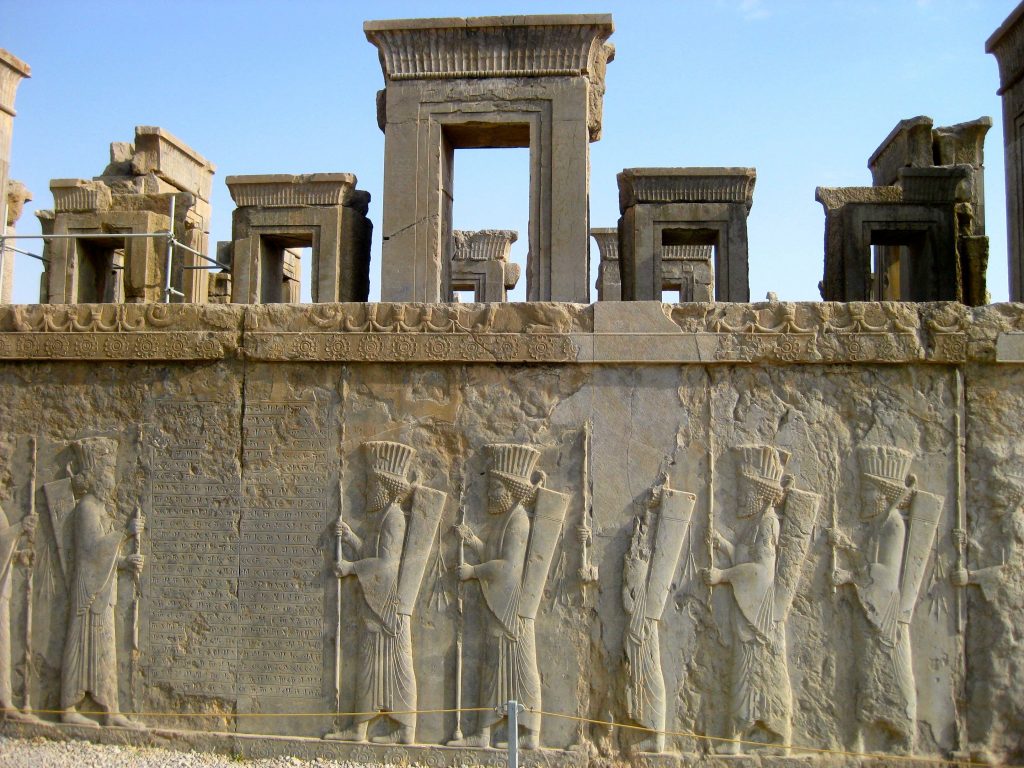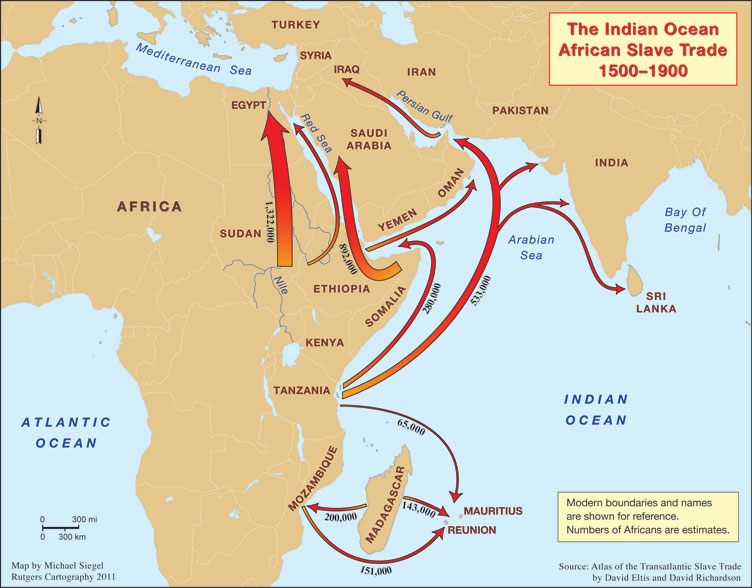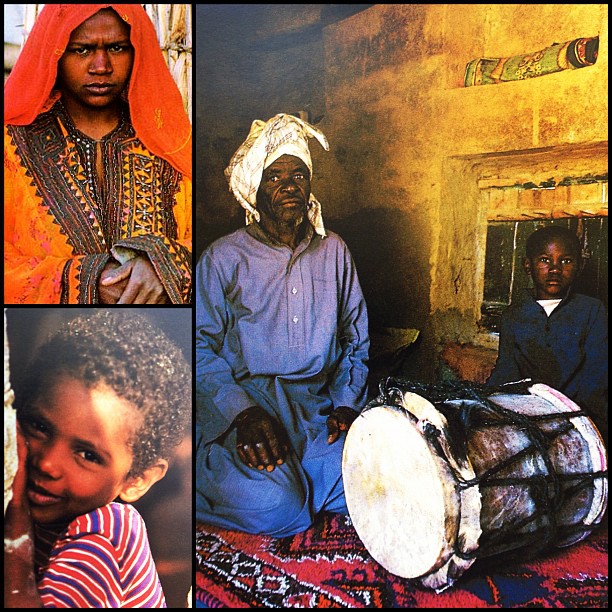BLACK SOCIAL HISTORY The Afro-Iranian Community: Beyond Haji Firuz Blackface, the Slave Trade, & Bandari Music
A friend recently shared two anecdotes from his trip to Iran with me that deal with race and skin color in the Iranian context. In Persepolis, which is located in southern Iran, darker features are more prevalent than in northern Iran. During a trip to the city, he and his Tehrani friends were surrounded by local schoolchildren yelling “hello!” and other basic English phrases. Even the teacher leading the group spoke to my friend in stilted English, asking where the group was from. The children were bewildered to learn that the light-skinned tourists (including one with red hair) were, in fact, Iranians and not Europeans. Conversely, the children had a darker skin tone that in Tehran might be seen as foreign or “Afghan.”

Ruins at Persepolis near the Main Hall, depicting members of the various tribes and nations of the Persian Empire offering tribute.
The second anecdote took place in Tehran. While walking down a busy street, my friend and his cousin noticed a man with darker skin. My friend’s cousin insisted that the man was a foreigner of African descent, but finally assented once she overheard him speaking fluent Persian. In both of these anecdotes, Iranians traveling within Iran encountered racial and ethnic others and were forced forced to confront the reality that nationalist myths of ethnic homogeneity are completely artificial.
When talking about the diversity of Iran, most people will recall the various ethno-linguistic groups that are equally native to the Iranian plateau, like Persians, Azeris, Gilakis, Baluchis, and others who have migrated to the region through the centuries. In these discussions, however, Afro-Iranians and those of African descent are often ignored. Perhaps this stems from their limited exposure in mainstream Iranian culture. Or maybe it is because the legacy of African slavery in Iran contradicts the ever-so-pervasive Aryan myth of perfection and civilization. Regardless, most Iranians forget the Afro-Iranians and their rich traditions, despite their prominent cultural influence that persists today.
Many Iranians know and love Haji Firuz, the jovial singing icon that pops up for every Persian New Year, wishing everyone good and happy tidings for the upcoming year. While many regard Haji Firuz as a sort of Santa Claus figure, there is one marked difference between the two: Haji Firuz is black.
A quick Google image search shows that Haji Firuz is still primarily depicted with blackface. Despite this blatant racism, the festive costume is devoid of its problematic implications for many Iranians. In Iran, historians like Mehrdad Bahar have tried to explain away the blackface with references to ancient Iranian symbols, but his theories have little basis in history and are met with much skepticism by academics. Instead, another scholar, Jafar Shahri presented Haji Firuz as a more contemporary addition to the Norooz cheer, an African slave who serves an Iranian master. This version is supported by his Norooz rhyme, in which Haji Firuz addresses his master and encourages him to hold his head up high and be jolly.
Arbābe khodam, sareto boland kon, My master, hold your head up high,
Arbābe khodam, khodeto negah kon, My master, look at yourself,
Arbābe khodam, boz boze ghandi, My master, the billy goat!
Arbābe khodam, chera nemikhandi? My master, why don’t you laugh?
Arbābe khodam, khodeto negah kon, My master, look at yourself,
Arbābe khodam, boz boze ghandi, My master, the billy goat!
Arbābe khodam, chera nemikhandi? My master, why don’t you laugh?
The nonsensical rhyme and direct reference to his status as a slave reaffirm his role as a minstrel in Iranian society—a role that, despite the end of slavery in Iran, still persists in Norooz celebrations today. Although many Iranians do not consider Haji Firuz beyond his brief jingle every New Year, his character represents one aspect of Iran’s long history of slavery. Haji Firuz, in fact, hails from the Afro-Iranian community in southern Iran.
Statues of Haji Firuz decorate a Tehran park during the New Year period.
The majority of Afro-Iranians came to Iran via the Indian Ocean slave trade, a trade route between East Africa and the Middle East, which was dominated by Afro-Arabs merchants beginning in the ninth century. Because of the dispersal of slaves throughout the Middle East and subcontinent, virtually every country bordering the Persian Gulf has a legacy of slavery and African population, like the Afro-Iraqis, Afro-Pakistanis, Afro-Kuwaitis, Afro-Omanis, Afro-Saudis and so on.

It is important to note, however, that not all slaves in Iran were African, and not all Africans came to Iran by way of slavery. Iran also had alarge number of slaves from Southern Russia and the Caucuses in the north, while some African sailors came for work in the Persian Gulf. Despite this, the “black slave” image is dominant in Iran. By the nineteenth century, African slaves were prized as domestics or concubines in wealthy households.
Slavery persisted as a legal practice in Iran until 1928, when parliament introduced a bill that granted slaves freedom and declared them equal to all other Iranians. Although African slaves were dispersed across Iran, many Afro-Iranians settled in southern regions bordering the Persian Gulf after their emancipation. Since then, census records have not adequately reported the numbers of Afro-Iranians, and statistical information on these communities is largely unavailable.

Soccer team in Abadan, 1936.
Depending on where they settled, however, Afro-Iranians have assimilated with varying degrees of success. For example, Afro-Iranian communities in the Sistan-Baluchestan province function separately from the rest of society and perpetuate a rigid caste system within their community that offers little opportunities for social mobility.
The highest social class in the community are the Durzadehs, Africans who came to Iran for maritime work. The name Durzadeh comes from “dor” meaning pearl, a nod to their occupations in the Persian Gulf. Because of their notable status, the Durzadehs regard themselves as higher than the Ghulams and Nukars, who came to Iran as slaves. The caste system is so rigid that the marriage between the Durzadehs and the Ghulams or Nukars is strictly forbidden. In Bandar Abbas, however, the Afro-Iranian communities have assimilated to a much larger degree, and interracial marriages are not uncommon.

A street music performance in Bandar Abbas, a southern city with a high concentration of Afro-Iranians.
Religiously, most Afro-Iranians identify with Shi’ism, a symbol of their assimilation into greater Iranian society, but folk traditions and mystic beliefs permeate their communities as well. In Behnaz Mirzai’s documentary Afro-Iranian Lives, she interviewed different members of the Afro-Iranian community in Qeshm, an island in the Persian Gulf, to better understand the practice of zar, a belief that people can be possessed by up to seventy-two different kinds of winds. The belief in zar can also be found amongst indigenous populations in Egypt, Sudan, and Ethiopia.
Related to zar is gowati, the belief that dancing has healing properties. Bandari music and dancing have its roots in gowati, which has been largely eclipsed by the shiny costumes and Los Angeles Iranian music industry.
Despite the popularity of bandari music, however, the depiction of Afro-Iranians in popular media is fairly scant. The most famous portrayal of an Afro-Iranian is Bahram Beizai’s 1989 film Bashu: the Little Stranger. The film follows the story of a boy who is orphaned by the Iran-Iraq war and escapes war-torn Khuzestan for safety.
Bashu finds himself in the entirely foreign Mazandaran province in Northern Iran, where his adoptive mother buys extra bars of soap to wash his skin clean from its darkness, children bully him for his complexion, and villagers call him a bad omen. Baizai addresses racism and ignorance directly, taboo topics in mainstream Iranian culture.
The neglect of Afro-Iranians by most Iranians stems from a number of factors, most of which stem from the Aryan myth. The Aryan myth effectively whitewashed Iran’s history, leading many to believe that true Iranians are only light-skinned and that Iran never engaged in slavery. Beyond this, the lack of Afro-Iranian presence in media further reinforces any preconceived notions that exist about Africans in Iran: that they simply do not exist.
Regardless of the reasons for the neglect, it is important to acknowledge the presence and history of the Afro-Iranian communities, not only for their sake, but with the intention of better confronting racist narratives, like the Aryan myth, that exclude so much of Iran’s population.
Standing in the middle of a crowd, the man in this video relates his experiences with lighter-skinned Iranians in Tehran pestering him questions about his blackness. Because many are unfamiliar with Afro-Iranians, especially in more northern areas of Iran like Tehran, many quickly assume that people with darker skin are foreigners. These assumptions lead to much confusion with the so-called “foreigner” begins speaking Persian. In this man’s experience, people in Tehran stupefied by his Persian approached him and asked,
“Excuse me, sir? Excuse me? But why are you Black? Why are you Black?”






































No comments:
Post a Comment